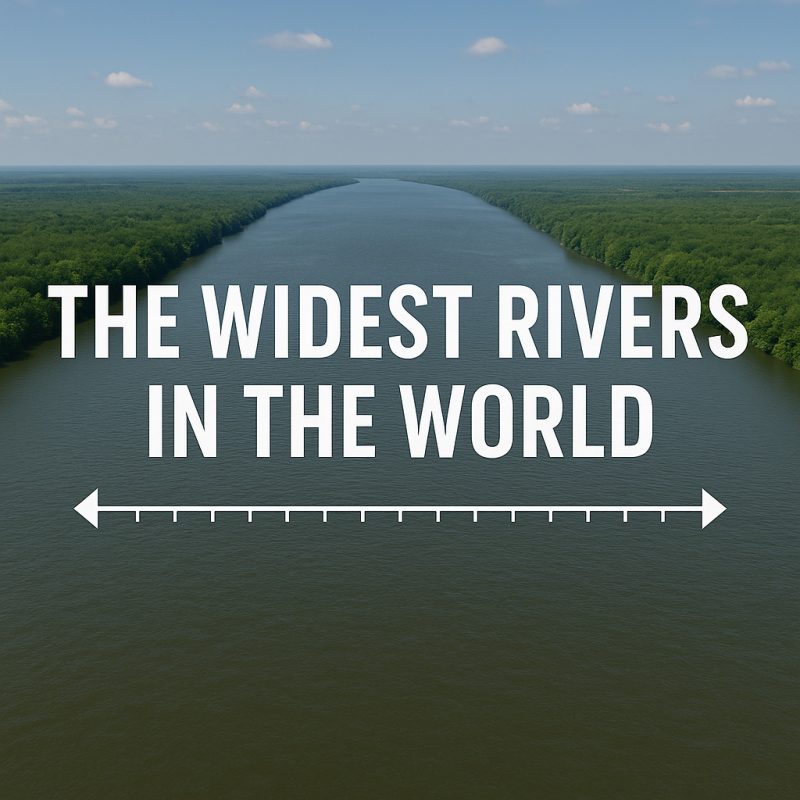Discover the widest rivers in the world—from the mighty Amazon to the vast Río de la Plata. Explore stunning facts, seasonal widths, and where these liquid giants stretch beyond the horizon.
When we think of rivers, we often picture winding waterways carving through landscapes. But some rivers defy this image completely—so wide they seem more like inland seas than rivers at all. These aquatic giants stretch across the earth with a force and beauty that stuns even the most seasoned traveler.
Here are the widest rivers in the world, where the horizon blurs into water and scale becomes almost mythic.
💧 1. The Amazon River, South America
📍 Brazil, Peru, Colombia, and more
🌀 Maximum Width (Rainy Season): ~24.8 miles (40 kilometers)
The Amazon isn’t just the largest river by discharge—it’s also the widest during its seasonal peak. In the rainy season, it becomes an oceanic floodplain, swallowing islands and forests into its watery embrace. From a boat, you can barely see the shoreline in any direction—it’s that vast.
💧 2. The River Plate (Río de la Plata), South America
📍 Argentina & Uruguay
🌀 Maximum Width: ~136 miles (220 kilometers)
Yes, you read that right. The Río de la Plata is a river estuary, and technically, it’s the widest river in the world. It’s where the Paraná and Uruguay rivers merge and spill into the Atlantic, forming a water body so expansive, it feels like sailing through a misty sea with Buenos Aires shimmering faintly on one shore.
💧 3. The Congo River, Africa
📍 Democratic Republic of Congo & Republic of Congo
🌀 Maximum Width: ~9 miles (14 kilometers)
In its lower stretches, especially during the wet season, the mighty Congo unfurls to incredible widths. It cuts through equatorial rainforest, roaring with hypnotic power. It’s also the world’s deepest river—and its breadth is no less impressive.
💧 4. The Mississippi River, North America
📍 USA
🌀 Maximum Width: ~11 miles (17.7 kilometers)
At Lake Winnibigoshish in Minnesota, the Mississippi reaches its widest natural point. But during floods, parts of the lower Mississippi can spread even farther. It’s a river woven into the fabric of American culture, with a depth of personality and literal breadth to match.
💧 5. The Ganges Delta, South Asia
📍 India & Bangladesh
🌀 Widest Channels: 15–20 miles (24–32 kilometers)
While the Ganges splits into many distributaries, rivers like the Padma and Meghna can reach extraordinary widths as they spill into the Bay of Bengal. This deltaic region is one of the most fertile and densely populated on Earth, fed by these majestic water lanes.




